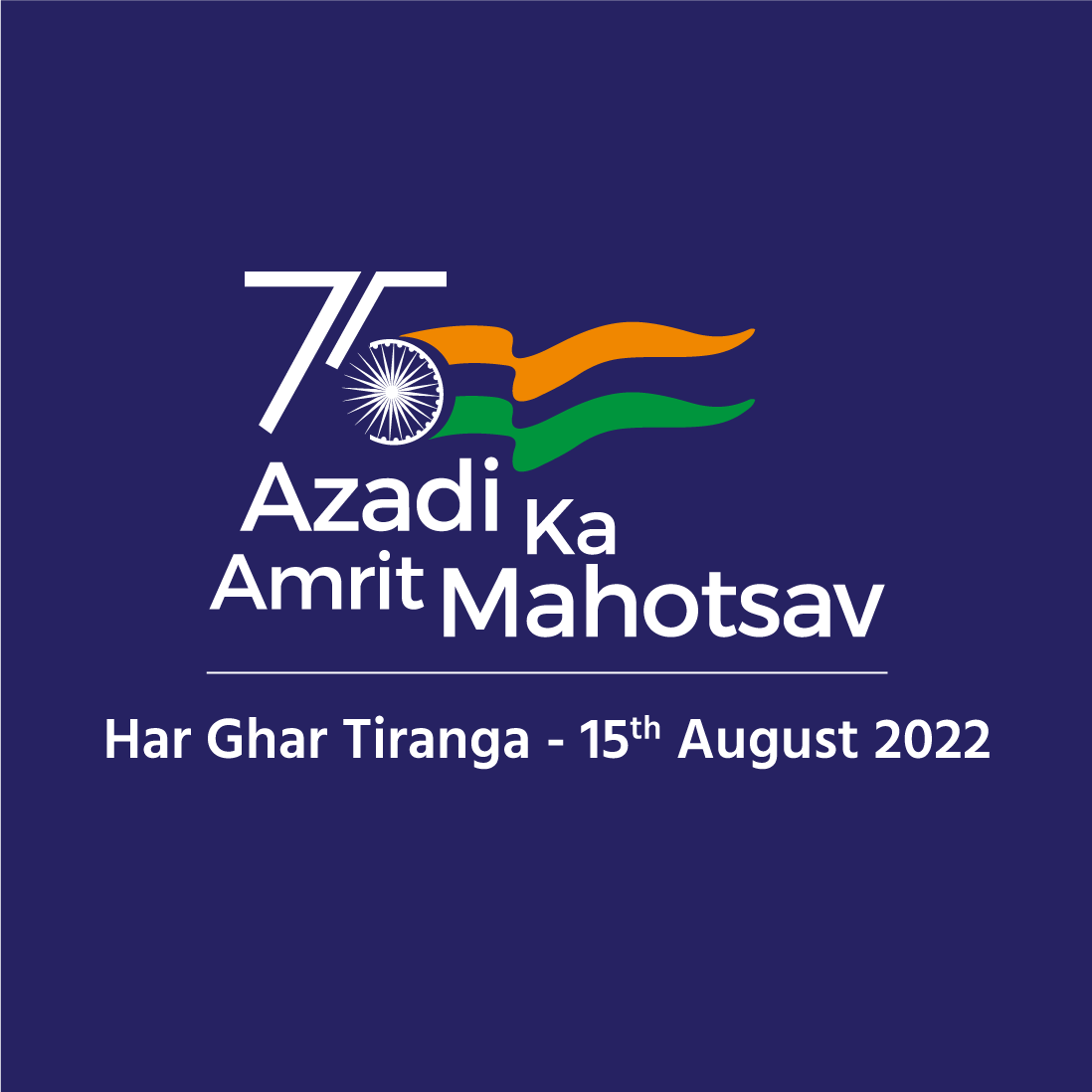
Indian Council of World Affairs
Sapru House, New Delhi'India’s Notices to Pakistan to ‘Modify’ the Indus Water Treaty: Causes and Implications'
In a first since its signing, more than twice in the last two years, India has sent notifications to Pakistan through the Permanent Indus Commission (PIC) for modification of the Indus Water Treaty (IWT) or written to Islamabad regarding it.[i] The first formal notice was dated 25 January 2023, just two days before the Court of Arbitration (CoA) met at The Hague to discuss Pakistan’s objections over two hydroelectric projects (HEPs) by India, namely, the 330 MW Kishenganga HEP (KHEP) on Jhelum and the 850 MW Ratle HEP on Chenab. Thereafter, India boycotted the CoA meeting on 27 January 2023 because New Delhi’s position is to try and resolve matters relating to these projects through a ‘neutral expert’ (NE). Per the provisions of the IWT, a NE should look into the matter before it is taken to the CoA. By boycotting the CoA meeting, India challenged the process of resolving the differences. Indirectly, it also questioned the World Bank (WB), the mediator of the IWT, for allowing both the NE and CoA processes to run simultaneously, instead of subsequently. The second notice, dated 30 August 2024, was sent with an aim to ‘review and modify’ the treaty that is ‘one-sided’. On 20 January 2025, NE, Michel Lino, noted that he is ‘competent’ to decide on the matter, vindicating India’s position on the issue to some extent.
By sending these notices, India has clearly registered a need for updating the 64-year-old IWT. Given that the IWT is often cited as a great example of diplomatic negotiation and dispute resolution between two countries, the question that has come up is, why is India looking at revising it now? Further, what does the NE’s statement mean for the future of IWT? To understand these, one needs to look at some of the contentions that have taken place under the IWT and contextualise the ongoing differences over the two HEPs within a broader framework of the matter.
Diplomatic High Point
As a result of the partition in 1947, a problem arose about the division of the Indus water system between the newly created nation-states – India and Pakistan. At that time, a Standstill Agreement was signed over water distribution, which failed to solve problems, however. It was after nine years of negotiations that the IWT was signed by the Prime Minister of India, Jawaharlal Nehru, and the President of Pakistan, Ayub Khan, on 19 September 1960 in Karachi. As the negotiation process was initiated by the then President of the WB, Eugene Black, the WB also became a signatory and continues to be a third party, the mediator, within this Treaty.
The Treaty contains 12 Articles, the first of which defines the Indus, the Jhelum and the Chenab taken together as the Western Rivers and the Sutlej, the Beas and the Ravi taken together as the Eastern Rivers.[ii] As per Article II, “all waters of the Eastern Rivers shall be available for the unrestricted use of India”, while Article III notes that “Pakistan shall receive for unrestricted use all those waters of the Western Rivers which India under obligation is to let flow” beyond the permitted use.[iii] India is permitted to use the Western Rivers for four purposes – domestic use, non-consumptive use, agricultural use and generation of hydroelectric power – all of which have been defined within the IWT.[iv]
The IWT of 1960 was hailed as a success, especially given that a comprehensive text was agreed upon after arduous negotiations, despite a war having been already fought between India and Pakistan by then. The US President of the time, Dwight Eisenhower, is said to have remarked about the Treaty as a “bright spot…in a very depressing world picture”.[v]
The IWT has had some good examples of successes despite full-fledged wars being fought between India and Pakistan. The first objection raised by Pakistan in 1974, over the Salal dam on the Chenab river, was resolved in 1978. Similarly, resolution of the issues over Baglihar HEP by 2010, despite six specific design objections raised by Pakistan, made water diplomacy under IWT look more effective than anything else between India and Pakistan. In fact, in the same year, Pakistan also withdrew its objections to the 240 MW Uri II HEP on Jhelum and the 44 MW Chutak HEP on the Suru River, a tributary of the Indus. It was the first time an issue over the design of a project had been successfully taken care of at the PIC level.[vi]
Growing Contentions
The IWT has not been immune from problems. India’s relatively recent notices to Pakistan must be read within the context of two debates vis-à-vis the IWT.
First is regarding India’s share of water as per the Treaty. About 20% of the water of the Indus River system has been allocated to India, amounting to 33 million acre-feet (MAF), for its exclusive use. The remaining 80%, amounting to 135 MAF, is allocated to Pakistan.[vii] This, though, reads as an unfair arrangement favouring Pakistan, was agreed upon by India as an upper riparian state, hoping it would allow Pakistan to feel more secure. However, Pakistani dissatisfactions were visible since early times. The Tulbul navigation project is a case in point. The project had to be suspended in 1987, after Pakistan began objecting to it once construction had already begun in 1984. It stated that the Wullar barrage storage project, the term used in Pakistan for the Tulbul project, was in violation of storage capacity beyond what was permissible under IWT. Despite a compromise by India, Pakistan rejected the project altogether. Multiple negotiations – 1998, 2004, 2006–07 (under Composite Dialogue), 2011 and 2012 – could not settle the matter, though India is reviewing the 1987 decision of its suspension[viii] and pushing to discuss it again, which Pakistan has ignored.
More importantly, for India, the problem has been the constant and repeated objections Pakistan has raised over projects that India has either implemented or plans to implement on the Western Rivers. As mentioned above, India has some specific rights over the Western Rivers as well. Yet, it may be noted that “out of an estimated power potential of about 20,000 MW, which could be harnessed from western rivers’ power projects, only a capacity of 3,482 MW have been constructed so far” by India.[ix] It is by no means that India has infringed onto waters that belong to Pakistan, therefore. However, particularly under the pretext of ‘design’ contravening IWT, Islamabad has made it a habit to halt India’s attempts to utilise its share of the Western Rivers. For instance, the KHEP was first objected to in 1988.[x] By 2005, despite design changes proposed by India, Pakistan refused to agree. The issue was also taken up for negotiations during the 2005–06 Composite Dialogue between India and Pakistan. Of the six objections raised, four were design related and the other two were to do with legal aspects of water diversion and reservoir silt management.[xi] In 2013, the CoA vindicated India’s position, especially its right to divert water from the Neelum (Jhelum) river[xii]. Despite one of these issues having been resolved amicably by the two Commissioners,[xiii] Pakistan objected again in 2014. By 2016, the matter was pushed to the CoA with three main objections over its design, bypassing the step of referring it to the NE. Similarly, HEPs, such as Ratle, Pakal Dul, Lower Kalnai, etc. are among some of the projects where Pakistani objections over designs seem to be nothing more than an attempt to stop India from gaining out of the run-of-the-river (RoR) projects to generate hydroelectricity, a right that India has under the IWT.
A second debate through which India’s notices may be looked at is that of New Delhi’s strategic and national interest. Despite not misusing the status of being an upper riparian state of the Indus water system, India has never received any appreciation, nor has Pakistan felt secure about waters, even with the IWT in place. India-Pakistan relations in the last decade only went downhill, particularly as cross-border terrorism continued to take place, reflecting on the dwindling scope of water diplomacy. After the Uri attack on the Indian military base in 2016, Prime Minister Narendra Modi called for an inter-ministerial task force to look into the strategic aspect of the IWT, stating that “blood and water cannot flow together”.[xiv] Since then, India has expedited multiple projects to manage and harness water from both the Western and Eastern rivers to the optimum level, as per the provisions of the IWT. As regards the Eastern Rivers under India’s exclusive use, 95% of the water has been utilised. However, around 2 MAF of water from Ravi stands unutilised annually, to manage which steps have been taken by India in the last few years.[xv] On the Western rivers, some of the planned projects in recent years include 540 MW Kwar, 1000 MW Pakal Dul, 624 MW Kiru, 390 MW Kirthai I and 930 MW Kirthai II, 1856 MW Sawalkot, etc. In these cases, too, increasing objections by Pakistan have infringed upon India in exercising its right under the IWT. This is despite India providing all information required through the PIC.
As is understood, a graded mechanism has been provided under Article IX of the IWT for resolution of issues. Any ‘question’ raised is first to be ‘examined by the Commission’. If not resolved, the ‘difference’ is then to be taken up by a ‘neutral expert’, appointed by the WB. Only as a last resort does a ‘dispute’ go to the CoA at The Hague. In the recent case, Pakistan sought to resolve matters via a NE in 2015, but the very next year took the path of CoA. This is tantamount to Pakistan breaching Treaty procedures and declaring it as a dispute unilaterally. It may also be noted here that Article VII of the IWT emphasises future cooperation and “common interests in the optimum development of the Rivers”, spelling out the spirit of the Treaty. If the cooperative spirit itself is under question, so may be provisions of the Treaty. Further, Article XII (3) notes that “provisions of the Treaty may from time to time be modified”. It is under this clause that the recent notices were sent to seek “modification” of the IWT. It is not the first time that such a modification has been suggested. In August 2021, a Parliamentary Standing Committee in India recommended modifying the IWT in view of new variables that impact water resources management, such as climate change, global warming and advanced knowledge and technologies that did not exist when the Treaty was signed.[xvi]
What next?
Legally speaking, India took action that it deems fit pertaining to the IWT. When both India and Pakistan sought separate ways of resolution in 2016, via NE and CoA, respectively, the issue was ‘paused’ by the WB. In 2022, however, by appointing both a NE and a Chairman within the CoA, the WB took the liberty to interpret the Treaty on its own, a stance India is unhappy with. In 2023, India stated that the Pakistani ‘intransigence’ on the IWT forced it to send the notification, as also parallel processes being followed on the same question is unprecedented and creates a contradictory/‘legally untenable’ situation. This position still holds. India has made it clear that no meeting of the PIC can be arranged if Pakistan ignores the requests for the modification of the IWT. This is why the 118th meeting of the PIC was the last that was held, in May 2022.
While there are growing contentions over the provisions of the IWT between India and Pakistan, the long-standing Treaty is not expected to be a cause of an immediate water war between the two neighbours. The notices per se must be seen as a technical matter, which binds Pakistan to respond within 90 days. Both in 2023 and 2024, Pakistan responded within the stipulated time, albeit, without addressing the core issue on modification of the IWT or giving satisfactory answers. In the 2023 IWT notice, the Attorney General of Pakistan had stated that India cannot unilaterally change the IWT[xvii]. However, Islamabad seemed to have forgotten about its own unilateral decision to shift from the line of appointing a NE to going to the CoA regarding the current issues.
At this stage, India has not specified what it seeks to modify within the Treaty (at least publicly) but has pointed seven queries regarding the two HEP in question to the NE. The recent statement by the NE, stating that all of India’s questions fall under his ‘competent’ purview, adds weight on the Indian side. If India continues to push its case and a legal path is to be taken, the WB may have to give in to taking the CoA route after the NE has given its views. While this may not directly translate into a victory for India, it does vindicate India’s position on the matter. This will help India take the technical route to gain a fresh perspective of the IWT and force Pakistan to come to talks. A modification of the IWT will then only benefit India and allow it to use waters of the Indus system more satisfactorily.
The strategic aspect of the recent developments cannot be undermined. India is expected to gain if the matter is to go the legal way and good judgement prevails. However, certain points of caution need to be flagged in this regard. First, on the Chenab River, in particular, several projects have been planned and are being approved.[xviii] To avoid Pakistan seeking any mileage on the ecological or environmental front, protocols must be followed at an early stage of project planning and assessment. Second, analysts have cautioned about the possibility of Pakistan seeking China’s tacit help.[xix] There are ways through which China may take advantage of the matter, the most expected way being taking advantage as an upper riparian state on the Brahmaputra basin. The multiple projects China has planned/built on the upstream Brahmaputra have indeed raised concerns in India. Moreover, the IWT is considered to be a great example of dispute resolution not only in South Asia but also on a broader scale. As this corrodes, floodgates of bilateral Indo-Pak issues may find themselves being opened up or escalated in the coming times.
Yet, being well aware of any fallout, India has made the assessment that the risk is worth taking to protect its national interests and rights. While India continues to celebrate its Amritkaal, stands confidently at the high tables on diplomacy on global matters and has emerged as the fifth largest economy globally, contrarily Pakistan has been undergoing its worst phase in recent times. Its economy is in tatters and seems to have not found any respite. Pakistani society is reeling under consequent pressures, including from increased terror attacks. International community’s confidence in Pakistan is at an all time low. At such a time, Pakistan cannot afford to continue to be at loggerheads with India.
In conclusion, it can be said that the IWT and the differences over it are to be closely observed as India pursues its initiative to seek structural changes in the Treaty hitherto considered to be a success in India-Pakistan relations but now being considered by India as ‘one-sided’ and in need for a ‘review’ and ‘modification’. India’s moves related to the IWT to secure its interests and rights will likely have an impact on the overall trajectory of its relations with Pakistan as also on other aspects of their ties.
*****
*Dr Shrabana Barua is an Associate Professor at the Jindal School of International Studies, O.P. Jindal University. She is a former Research Fellow, ICWA.
Disclaimer: Views expressed are personal.
Endnotes
[i] Suhasini Haider and Jocob Koshy, ‘No more Indus Commission meetings till Treaty renegotiated: India’, 18 September 2024, The Hindu, URL: https://www.thehindu.com/news/national/india-serves-notice-to-pakistan-seeking-review-of-indus-water-treaty/article68655577.ece
[ii] Text of the Indus Water Treaty, 1960, Accessed on 2 February 2023, URL: https://jalshakti-dowr.gov.in/sites/default/files/INDUS%20WATERS%20TREATY.pdf.
[iii] Ibid.
[iv] Ibid.
[v] ‘Fact Sheet: The Indus Water Treaty1960 and the Role of World Bank’, The World Bank, 11 June 2018, URL: https://www.worldbank.org/en/region/sar/brief/fact-sheet-the-indus-waters-treaty-1960-and-the-world-bank.
[vi] ‘Pak withdraws objection to two J&K power projects’, The Hindu, 31 May 2010, URL: https://www.thehindu.com/new
s/national/Pak-withdraws-objection-to-two-JampK-power-projects/article16304798.ece.
[vii] ‘Indus Water Treaty 1960: Present Status of Development in India’, Ministry of Water Resources, River Development and Ganga Rejuvenation, Government of India, 22 February 2019, URL: https://pib.gov.in/Pressreleaseshare.aspx?PRID=1565906.
[viii] ‘Reviewing Tulbul navigation project can put Pakistan on backfoot: Officials’, Business Standard, 26 September, 2016, URL:https://www.business-standard.com/article/news-ians/reviewing-tulbul-navigation-project-can-put-pakistan-on-backfoot-officials-116092601242_1.html.
[ix] Harikishan Sharma, ‘Changed circumstances: In 2021, House panel urged Centre to renegotiate Indus treaty’, The Indian Express, 29 January 2023, URL: https://indianexpress.com/article/india/changed-circumstances-in-2021-house-panel-urged-centre-to-renegotiate-indus-treaty-8410215/.
[x] Partial Award over The Indus Water Kishenganga Arbitration, Court of Arbitration, 18 February 2013, pp. 46, URL: https://pcacases.com/web/sendAttach/1681
[xi] P.K. Saxena, ‘Indus Water Dispute: India’s Strategic Victory in Neutral Expert Proceedings’, NatStrat, January 2025.
[xii] Partial Award over The Indus Water Kishenganga Arbitration, Court of Arbitration, 2013.
[xiii] Saxena, 2025.
[xiv] ‘Blood and water cannot flow together: PM Modi at Indus Water Treaty meeting’,The Indian Express, 27 September 2016, URL: https://indianexpress.com/article/india/india-news-india/indus-water-treaty-blood-and-water-cant-flow-together-pm-modi-pakistan-uri-attack/.
[xv] Press Information Bureau, Government of India, Ministry of Water Resources, River Development and Ganga Rejuvenation, URL: https://pib.gov.in/Pressreleaseshare.aspx?PRID=1565906.
[xvi] ‘Parliamentary panel recommends renegotiation of Indus Water Treaty’,The Statesman, 6 August 2021, URL: https://www.thestatesman.com/india/parliamentary-panel-recommends-renegotiation-indus-water-treaty-1502991042.html
[xvii] Sandeep Dikshit, ‘Pakistan opposes India's notice to alter Indus Water Treaty as first hearing on dispute begins at The Hague’, The Tribune, 28 January, 2023, URL: https://www.tribuneindia.com/news/nation/pakistan-opposes-indias-notice-to-alter-indus-treaty-as-first-hearing-on-dispute-begins-at-the-hague-474323.
[xviii] R.H. Naik, ‘Protests against the Bursar dam in J&K gather steam’, The Third Pole, 30 April 2018, URL: https://www.thethirdpole.net/en/energy/jk-bursar-dam/.
[xix] Sushant Sarin, ‘Indus Waters Treaty: Opening the water front’, ORF, 28 January 2023, URL: https://www.orfonline.org/expert-speak/indus-waters-treaty/.















